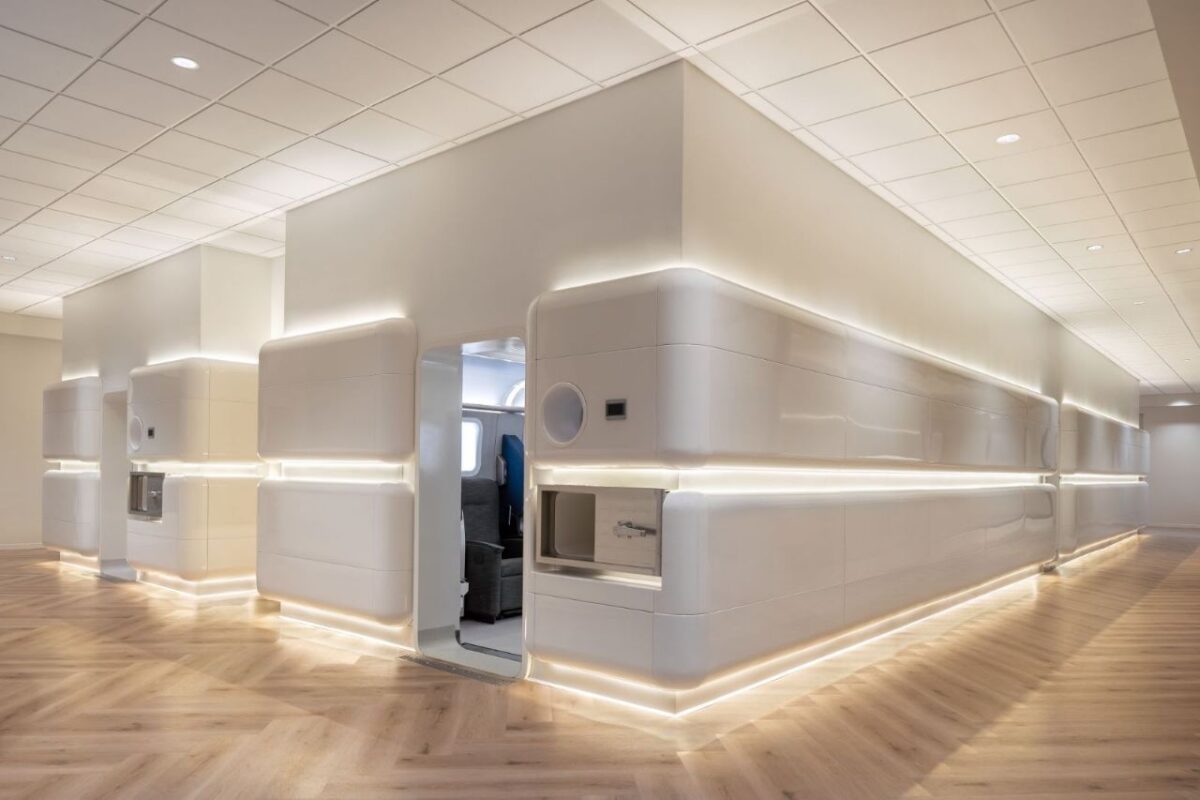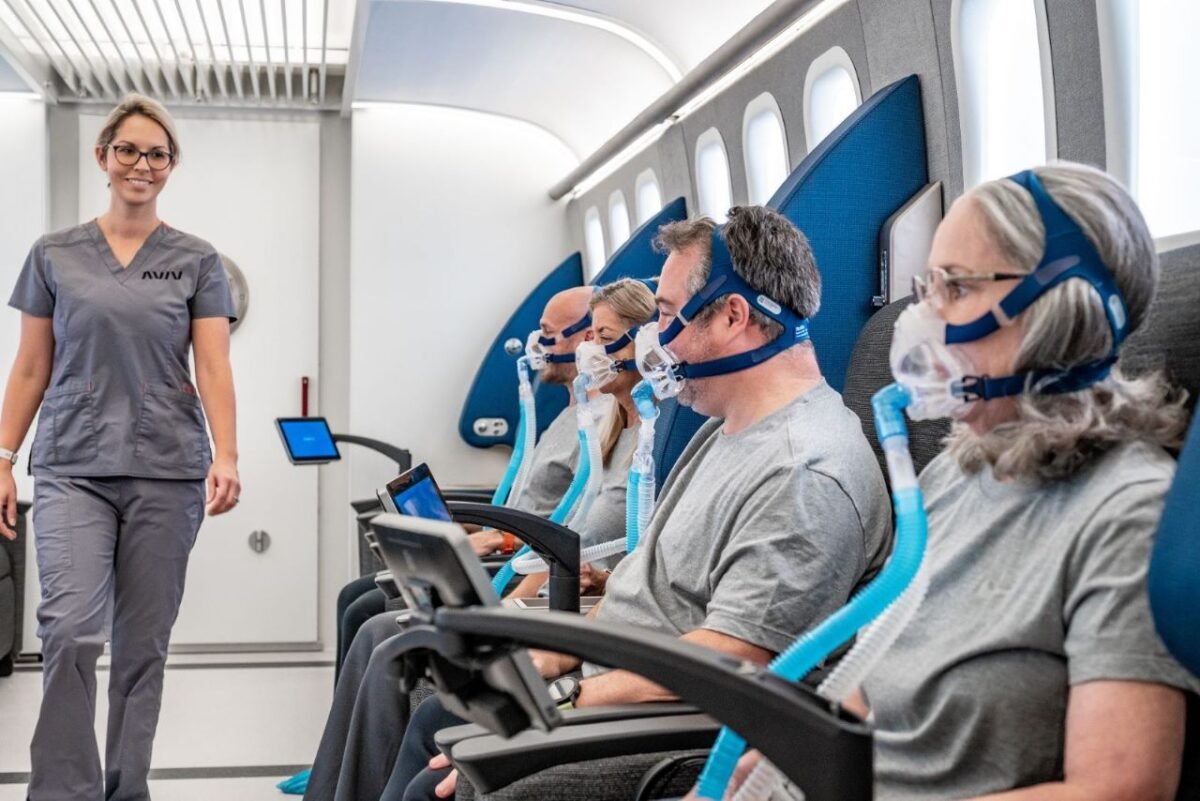Hyperbaric Oxygen Therapy More Effective Treatment for Fibromyalgia Than Drugs: Study
According to a recent Israeli study, a dedicated hyperbaric oxygen therapy (HBOT) protocol was more effective in reducing pain than available drugs in patients suffering from fibromyalgia following head injury.
Fibromyalgia Syndrome (FMS) is a common condition affecting about 4 million U.S. adults or about 2 percent of the adult population. It is clinically characterized by widespread chronic pain, dyscognition (fibro fog), and associated symptoms.
“Existing treatments are not good enough,” one of the leading researchers, Dr. Jacob Ablin from the Tel Aviv Sourasky Medical Center, said in a statement. “It is a chronic disease that significantly affects the quality of life, including young people, and hyperbaric medicine meets an acute need of these patients.”
Fifty-eight individuals, divided into either the pharmacological intervention group or the HBOT group, completed their protocols. All participants were 18 years and older and had suffered from FMS for over a year due to a traumatic brain injury (TBI).
Each group included 29 patients with no statistically significant differences in baseline characteristics or symptoms.
The HBOT protocol included breathing 100 percent pure oxygen by mask in a chamber, at a pressure of two atmospheres, for 90 minutes with five-minute breaks of breathing regular air every 20 minutes. The participants had 60 sessions daily, 5 days a week, for three months.
The pharmacological intervention the treating physician chose included one of the two medications approved in Israel for FMS: Pregabalin (brand name Lyrica) and Duloxetine (brand name Cymbalta).
“Evaluation was performed at baseline for both groups and 1–3 weeks after the last HBOT session or three months of medications protocol.” The evaluators did not know to which group the participants were allocated.
The study, conducted by Tel Aviv University’s Sackler Faculty of Medicine researchers, was recently published in the journal PLOS One.
‘Improvement Is So Dramatic’
Outcomes of the study were measured by a subjective pain intensity evaluation with questionnaires for evaluating: fibromyalgia—related symptoms (such as fatigue, trouble thinking or remembering, pain or cramps in the lower abdomen, depression, and headache), quality of life, and psychological distress.
The researchers also assessed pressure pain threshold and brain activity imaging.
HBOT significantly improved all FMS pain measures, quality of life, emotional health, and social functions.
In addition, after HBOT, 11 (37.9 percent) participants no longer met FMS diagnostic criteria, which did not happen to any patient in the medication group.
“That means the improvement is so dramatic that they no longer meet the criteria” for FMS, Shai Efrati, MD, one of the lead authors, director of the Sagol Center for Hyperbaric Medicine and Research at Shamir Medical Center, told The Epoch Times.
Furthermore, pain threshold tests improved on average 12 times in the HBOT group compared to the medication group, said the associate professor at the Sackler School of Medicine and the Sagol School of Neuroscience at Tel Aviv University, according to a press statement.
In addition to the pain measures, HBOT patients reported significant improvement in quality of life, emotional health, and social function. The researchers noted that clinical changes were correlated with increased brain activity in the frontal and parietal regions. They said in the study that this “provides additional information regarding the etiology and treatment of FMS.”
“The drugs work on pain. … If they do something, they can ease some pain,” said Efrati.
But the dedicated treatment protocol in the pressure chamber with the fluctuation in oxygen levels “triggers the stem cells in the brain to start dividing,” he said, adding that it “triggers the healing process in the brain—like healing a wound.”
Once you heal the wound, the pain goes away. It is a different approach that treats “the wound instead of giving you treatment for the pain,” he said.
Efrati called it a very significant change. “One, we see the biology behind the complaints. Two, we treat the biology that causes the problem and not the pain. And three, it brings us to results that are very exciting.”
Fibromyalgia Syndrome
About 20 years ago, FMS was considered a psychosomatic syndrome. People, especially women, would complain of pain all over the body, and when they were examined, the doctor wouldn’t be able to identify any problem. So they called it psychosomatic, said Efrati.
Today it is understood that this is a real biological problem—the problem is in the brain—in the areas responsible for interpreting the signals coming from the body, he said.
“It’s like when you are in a room and an alarm goes off. … The alarm is real, but there is no fire,” he said.
Today researchers understand that the damage is in specific areas of the brain, and they can see the structure and assess the function of those areas.
The study—where the trigger for FMS was a head injury—is part of a larger series of studies focused on HBOT treatment for FMS. The head injury could result from “a concussion, a shake, a car accident, [or] some sort of a blast wave,” said Efrati.
Severe mental stress can also be the trigger. He said it could cause a brain injury that is no less severe than a physical injury and could even be harsher.
A previous study found that HBOT showed significant clinical improvement among FMS patients with a history of childhood sexual abuse.

Hyperbaric Oxygen Therapy
HBOT is considered a safe treatment, used in many places, including Israel, and is already used to treat various medical conditions, according to the press statement.
In recent years, specific HBOT protocols have led to the growth of new blood vessels and neurons in the brain.
Certain fluctuations in pressure and oxygen can trigger stem cells in the brain to start dividing, Efrati said, adding that “we can trigger the creation of new blood vessels in the brain.”
“We started with classic injuries like stroke, like a head injury, and then expanded the canvas to other diseases like [FMS],” he said.
Efrati emphasized that HBOT is not yet an approved treatment for FMS. HBOT protocols can only be obtained in medically approved centers. He said a qualified doctor needs to examine the patient and determine if he is suitable for this treatment.
One of the limitations of the study identified by the authors was the need for data on the long-term effects of HBOT treatment.
The authors also indicated that further research is needed to optimize the specific HBOT protocol used in this study for patients.
Among the HBOT group in the FMS study, 18 participants (48.6 percent) experienced side effects. Most were mild and resolved after taking a few days off treatment. Among those in the pharmacological treatment group, the most common side effects were dizziness, drowsiness/weakness, nausea, and increased pain.
FDA–approved indications for HBOT are currently limited. They include decompression sickness, non-healing wounds, and radiation injury. Yet the study said certain HBOT protocols are being used in several types of brain injuries, including TBI, post-stroke, post-traumatic stress disorder, and age-related cognitive decline, among other neurological syndromes.




